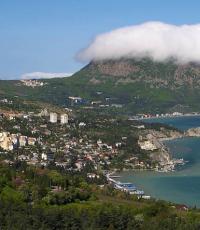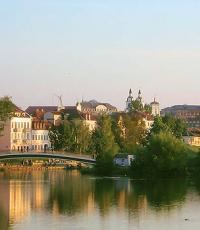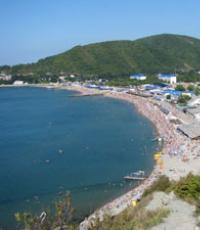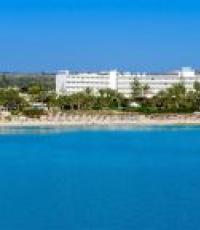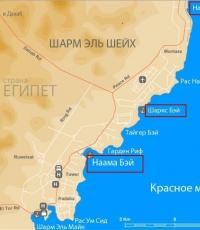Rock painting of the American Air Force. Rock painting of the American Air Force How to draw a plane bomber of the second world war
The art of painting on aircraft fuselages - nose art - appeared during the First World War.
Californian art critic and antiquarian Bruce Herman argues that the drawings on airplanes are a continuation of the European chivalrous traditions of heraldry.
“Pilots during the First World War most often themselves belonged to ancient noble families and, perhaps, took themselves seriously as new knights. They even had their own special knightly“ code of honor. ” coat of arms. It is here that one should look for the origins of the tradition of painting military aircraft, "says Herman.
It should be noted that the painting of aircraft during the First World War is distinguished by high professionalism and is of real artistic value.
“Most of the pilots at the turn of the century had a professional art education before the war,” Herman explains.
During the First World War, the pilots did not paint the planes themselves. Coats of arms, pictures and mottos were drawn on canvas, which was then attached to the wing or tail of a combat vehicle. At auctions, the price for such works of art can reach several hundred thousand dollars.
The Second World War
With the outbreak of World War II, the art of painting combat aircraft underwent dramatic changes. Classic plots and classical art have disappeared forever from the sides of fighters and bombers. His place was taken by popular cartoon characters.
The fashion for "war paint" aircraft rapidly won the hearts of pilots during the Second World War.
"Americans have proven to be the most uninventive but most active artists," says Herman.
Few people know that the founder of animation - Walt Disney - was also the "godfather" of nose art. After the outbreak of the war, the US Air Force hired artists from the Disney studio solely to paint the warplanes.
During the war, Disney's studio created free sketches of drawings for coloring planes, tanks and even stripes on uniforms. drew not only for the American military, sketches were requested by military units from Great Britain, Poland, China, New Zealand, Australia, Canada and France. During the war, Disney allocated five artists for the needs of the army. During World War II, 1200 drawings for the military were drawn at the Disney studio. The most popular hero was Donald Duck. The only cartoon character who was never drawn on military equipment was Bambi.
Disney himself, who went through the First World War as a soldier, amused himself in combat conditions by drawing on the helmets of his comrades. However, Disney fans lived not only in the United States.
"Disney was furious when he found out that several dozen Luftwaffe fighters had his Mikiya Mouse painted on the fuselage," Herman says.
In addition to animation, Esquire magazine was the main source of inspiration for martial artists. Most often, pictures of the Esquire artist Alberto Vargas were reproduced on the fuselages of bombers and fighters.
Nose art 1945-2003
After the end of World War II, nose art became widely known. Now about the pictures decorating combat aircraft, they know not only in the sky, but also on the ground.
In the West, extensive catalogs of symbols and drawings made on airplanes during various military conflicts are published.
The plot of the picture most often depends on the nature of the conflict.
It is worth noting that there are practically no undrawn aircraft, for example, in the US Air Force. Pictures are even on the top-secret B-2 and F-117 bombers. But in order to avoid misunderstandings, their pilots paint exclusively on the inside of the bomb bay doors or other surfaces that are invisible to the authorities.
Officially, the 23rd Flying Tigers Combat Group is the only Air Force unit allowed to paint on aircraft.




























War is transient, but music is eternal!
They began to decorate planes with images almost immediately after the appearance of military aviation. It is believed that the first drawing applied to the fuselage of an aircraft was the image of a sea monster on the nose of an Italian flying boat in 1913.
Later, drawing on the plane became known as nose art. Initially, the images on the airplanes resembled heraldic symbols, similar to those that ancient knights put on the shields. It is worth remembering the rearing stallion (cavallino rampante) of the Italian ace Francesco Baracchi. This coat of arms was later used by the Ferrari company.
Francesco Baraca poses in front of his plane!
Later, the drawings on the airplanes became more varied. For example, storks adorned the fuselages of French aircraft from Escadrille les Cigognes.

The most popular nose art in the US Air Force was during World War II. The initiators of the painting of the aircraft were often no longer the pilots, but its service personnel. The development of nose art in the United States was greatly influenced by pin-up. For example, the image of a naked pin-up star of that era, Betty Grable, flaunted on many military aircraft. In the USSR, such liberties, of course, were not allowed, but the drawings on Soviet planes of that time were also distinguished by their beauty and sophistication.
More often they began to apply drawings to the fuselage after the battle at the Kursk Bulge in 1943, when the initiative passed to the Red Army. Often, next to the image on the plane, one could see asterisks showing the number of enemy aircraft shot down (for the first time, Spanish pilots began to do this). On Soviet aircraft, victories could be indicated by asterisks of several colors. Personal victory was marked with one color, planes shot down in a group - with another.
Many Soviet viewers were able to get acquainted with the drawings on the airplanes thanks to the film "Only" old men "go to battle". On the fuselage of the plane of the squadron commander Alexei Titarenko, played by Leonid Bykov, a music staff was depicted. The image of the music is no coincidence. Such a drawing, for example, was on the plane of the Soviet attack pilot Vasily Emelianenko, who had a musical education.
Vasily Emelianenko's plane

The maestro himself!

The plane La-5 Kostylev in the exposition of the Museum of Defense of Leningrad.

Captain Alexander Lobanov (left) and Major Alexander Pavlov next to La-5FN, April 10, 1945

Lieutenant Zabiyaka G.I. against the background of the personalized Pe-2 205 series. The inscription "Bully" is white, lightning - yellow

Lieutenant Gennady Tsokolaev. On board - the emblem "Guard"

Captain Alexander Nikolaevich Kilaberidze from 65 GIAP in the cockpit of Yak-9, Belarus, June 1944

"Lion's Heart", LaGG-3 of Lieutenant Yuri Shchipov, 9th Fighter Aviation Regiment of the Black Sea Fleet Air Force.

Squadron Commander of the 566th ShAP Hero of the Soviet Union Vasily Mykhlik

The Il-2 "Avenger" aircraft was built at the expense of the chairman of the collective farm Grigor Tevosyan,
who killed two brothers in the war. Nelson Stepanyan flew on the plane.

Georgy Baevsky (right) and mechanic Sobakin in front of the Yak-9U. 5 GvIAP. Sprotau airfield, Germany. April 1945

On the keel LAGG-3 of Leonid Galchenko, instead of a red star, there is a black cat playing with a mouse.
1942 year. The cat was originally white

Malyutina Elena Mironovna and her swallow

Flight Commander of the 180th Guards Fighter Stalingrad Red Banner Aviation Regiment

Major General Georgy Zakharov in the cockpit of the Yak-3. By plane - George the Victorious,
piercing a snake with the head of Goebbels. Spring 1945

Pilot of the 958th Assault Aviation Regiment, Hero of the Soviet Union Ivan Meilus .

Airacobra by Vyacheslav Sirotin

Nikolay Proshenkov and his "Airacobra"

The Yak-9B aircraft of the commander of the 168th IAP, Lieutenant Colonel Grigory Kogrushev.

Captain Alexey Zakalyuk, 104th GvIAP

Alexey Alelyukhin's plane

Captain Georgy Urvachev (left)

Fighter pilot Vladimir Dmitriev

Aircraft of Senior Lieutenant Vasily Aleksukhin

Fedor Dobysh and Alexander Pomazunov against the background of the Pe-2 with a crocodile

Airplane of Abrek Barsht

Nikolay Didenko's plane

The plane of Vladimir Pokrovsky

The commander of the Cherbourg squadron of the Normandy regiment Marcel Lefevre and his Soviet comrades (technician-lieutenant Tarasov and senior sergeant Kolupaev) at the Yak-9 # 14 fighter
They began to decorate planes with images almost immediately after the appearance of military aviation. The founders of this type of painting were Italian and German pilots. It is believed that the first drawing applied to the fuselage of an aircraft was the image of a sea monster on the nose of an Italian flying boat in 1913. Later, drawing on the plane became known as nose art.
Initially, the images on the airplanes resembled heraldic symbols, similar to those that ancient knights put on the shields. It is worth remembering the rearing stallion (cavallino rampante) of the Italian ace Francesco Baracchi. This coat of arms was later used by the Ferrari company.
Later, the drawings on the airplanes became more varied. For example, storks adorned the fuselages of French aircraft from Escadrille les Cigognes. The most popular nose art in the US Air Force was during World War II. The initiators of the painting of the aircraft were often no longer the pilots, but its service personnel. The development of nose art in the United States was greatly influenced by pin-up. For example, the image of a naked pin-up star of that era, Betty Grable, flaunted on many military aircraft. In the USSR, such liberties, of course, were not allowed, but the drawings on Soviet planes of that time were also distinguished by their beauty and sophistication. Many Soviet viewers were able to get acquainted with the drawings on the airplanes thanks to the film "Only" old men "go to battle". On the fuselage of the plane of the squadron commander Alexei Titarenko, played by Leonid Bykov, a music staff was depicted. The image of the music is no coincidence. Such a drawing, for example, was on the plane of the Soviet attack pilot Vasily Emelianenko, who had a musical education. It also recalls the plane that the Utesov ensemble presented to Soviet pilots during the war. Cases when airplanes were built at the expense of citizens were not uncommon. Such fighters usually had an inscription indicating whose money the car was created with. Sometimes there was a small image next to the inscription.

Photo: Kostylev's La-5 aircraft on display at the Museum of the Defense of Leningrad.

Photo: Captain Alexander Lobanov (left) and Major Alexander Pavlov next to La-5FN, April 10, 1945

Photo: Lieutenant Zabiyaka G.I. against the background of the personalized Pe-2 205 series. The inscription "Bully" is white, lightning - yellow

Photo: Lieutenant Gennady Tsokolaev. On board - the emblem "Guard"

Photo: Captain Alexander Nikolaevich Kilaberidze from 65 GIAP in the Yak-9 cockpit, Belarus

Photo: "Lionheart", LaGG-3 of Lieutenant Yuri Shchipov, 9th Fighter Aviation Regiment of the Air Force


Photo: Squadron Commander of the 566th ShAP Hero of the Soviet Union Vasily Mykhlik

Photo: The Il-2 "Avenger" aircraft was built at the expense of the chairman of the collective farm Grigor Tevosyan, whose two brothers were killed in the war. Nelson Stepanyan flew on the plane.

Photo: Georgy Baevsky (right) and mechanic Sobakin in front of the Yak-9U. 5 GvIAP. Sprotau airfield, Germany. April 1945


Photo: On the keel LAGG-3 of Leonid Galchenko, instead of a red star, there is a black cat playing with a mouse. 1942 year. The cat was originally white

Photo: Elena Malyutina and her swallow

Photo: Flight Commander of the 180th Guards Fighter Stalingrad Red Banner Aviation Regiment of the Guard Senior Lieutenant Viktor Lukoshkov in front of La-5FN
Photo: Major General Georgy Zakharov in the Yak-3 cockpit. On the plane - George the Victorious, piercing a snake with the head of Goebbels. Spring 1945

Photo: Pilot of the 958th Assault Aviation Regiment, Hero of the Soviet Union Ivan Meilus.

Photo: Airacobra Vyacheslav Sirotin

Photo: Mikhail Avdeev's Eagle

Photo: Nikolay Proshenkov and his "Airacobra"

Photo: Vasily Emelianenko's plane

Photo: Yak-9B aircraft of the commander of the 168th IAP, Lieutenant Colonel Grigory Kogrushev.

Photo: Captain Alexey Zakalyuk, 104th GvIAP

Photo: Alexey Alelyukhin's plane

Photo: Captain Georgy Urvachev (left)

Photo: Fighter pilot Vladimir Dmitriev

Photo: Aircraft of Senior Lieutenant Vasily Aleksukhin

Photo: Fedor Dobysh and Alexander Pomazunov in front of the Pe-2 with a crocodile

Photo: Airplane of Abrek Barsht

Photo: Nikolay Didenko's plane
Drawing pictures on combat aircraft during the Great Patriotic War was not welcomed, although they turned a blind eye to this. More often they began to apply drawings to the fuselage after the battle at the Kursk Bulge in 1943, when the initiative passed to the Red Army. Often, next to the image on the plane, one could see asterisks showing the number of enemy aircraft shot down (for the first time, Spanish pilots began to do this). On Soviet aircraft, victories could be indicated by asterisks of several colors. Personal victory was marked with one color, planes shot down in a group - with another.
There were cases when the fuselage was decorated with the image of the "Golden Star" received for the victory. Old traditions have also survived: the nose of the fighter sometimes resembled the mouth of a mythical monster. In general, drawings and emblems that were intimidating to the enemy were often applied. For example, a dragon was depicted on the Yak-9 Gugridze fighter; a toothy mouth was on the plane of Georgy Kostylev.
There were no special rules for applying emblems. Each squadron had its own customs. Some pilots had their own emblem, others - common to all. Often planes were decorated with cards or a certain suit. Typically, it was an ace. It was usually applied by distinguished pilots. So, the aces were painted on the La-5 plane by Alexander Pavlov, on the LaGG-3 by Yuri Shilov.
Those who managed to knock out the German plane of the famous squadron placed on the fighter the emblem of this squadron, pierced by an arrow or entwined with a snake, or another similar symbol. For example, the planes of the squadron of the 9th Guards Regiment, commanded by Alexei Alelyukhin, carried the emblem invented by the pilot Yevgeny Dranishchev with a leopard breaking the heart. This indicated that the pilots had defeated the 9 Staffel JG 52 aces (the heart under the cockpit was their hallmark). The animals were often depicted on Soviet military aircraft. Drawings of birds were also common. So, similar images were on the planes of such famous pilots as Mikhail Avdeev, Vladimir Pokrovsky, Vyacheslav Sirotin. Symbolic images such as arrows and lightning were especially popular.
They began to decorate planes with images almost immediately after the appearance of military aviation. It is believed that the first drawing applied to the fuselage of an aircraft was the image of a sea monster on the nose of an Italian flying boat in 1913.
Later, drawing on the plane became known as nose art. Initially, the images on the airplanes resembled heraldic symbols, similar to those that ancient knights put on the shields. It is worth remembering the rearing stallion (cavallino rampante) of the Italian ace Francesco Baracchi. This coat of arms was later used by the Ferrari company.
Later, the drawings on the airplanes became more varied. For example, storks adorned the fuselages of French aircraft from Escadrille les Cigognes. The most popular nose art in the US Air Force was during World War II. The initiators of the painting of the aircraft were often no longer the pilots, but its service personnel. The development of nose art in the United States was greatly influenced by pin-up. For example, the image of a naked pin-up star of that era, Betty Grable, flaunted on many military aircraft. In the USSR, such liberties, of course, were not allowed, but the drawings on Soviet planes of that time were also distinguished by their beauty and sophistication. Many Soviet viewers were able to get acquainted with the drawings on the airplanes thanks to the film "Only" old men "go to battle". On the fuselage of the plane of the squadron commander Alexei Titarenko, played by Leonid Bykov, a music staff was depicted. The image of the music is no coincidence. Such a drawing, for example, was on the plane of the Soviet attack pilot Vasily Emelianenko, who had a musical education. It also recalls the plane that the Utesov ensemble presented to Soviet pilots during the war. Cases when airplanes were built at the expense of citizens were not uncommon. Such fighters usually had an inscription indicating whose money the car was created with. Sometimes there was a small image next to the inscription.

The plane La-5 Kostylev in the exposition of the Museum of Defense of Leningrad.

Captain Alexander Lobanov (left) and Major Alexander Pavlov next to La-5FN, April 10, 1945

Lieutenant Zabiyaka G.I. against the background of the personalized Pe-2 205 series. The inscription "Bully" is white, lightning - yellow

Lieutenant Gennady Tsokolaev. On board - the emblem "Guard"

Captain Alexander Nikolaevich Kilaberidze from 65 GIAP in the Yak-9 cockpit, Belarus

"Lion's Heart", LaGG-3 Lieutenant Yuri Shchipov, 9th Air Force Fighter Aviation Regiment


Squadron Commander of the 566th ShAP Hero of the Soviet Union Vasily Mykhlik

The Il-2 "Avenger" aircraft was built at the expense of the chairman of the collective farm Grigor Tevosyan, whose two brothers were killed in the war. Nelson Stepanyan flew on the plane.

Georgy Baevsky (right) and mechanic Sobakin in front of the Yak-9U. 5 GvIAP. Sprotau airfield, Germany. April 1945

On the keel LAGG-3 of Leonid Galchenko, instead of a red star, there is a black cat playing with a mouse. 1942 year. The cat was originally white

Malyutina Elena Mironovna and her swallow

Flight commander of the 180th Guards Fighter Stalingrad Red Banner Aviation Regiment of the Guard Senior Lieutenant Viktor Lukoshkov in front of La-5FN, July 19

Major General Georgy Zakharov in the cockpit of the Yak-3. On the plane - George the Victorious, piercing a snake with the head of Goebbels. Spring 1945 
Pilot of the 958th Assault Aviation Regiment, Hero of the Soviet Union Ivan Meilus.

Airacobra by Vyacheslav Sirotin

The eagle of Mikhail Avdeev

Vasily Emelianenko's plane

Nikolay Proshenkov and his "Airacobra"

The Yak-9B aircraft of the commander of the 168th IAP, Lieutenant Colonel Grigory Kogrushev.

Captain Alexey Zakalyuk, 104th GvIAP

Alexey Alelyukhin's plane

Captain Georgy Urvachev (left)

Fighter pilot Vladimir Dmitriev

Aircraft of Senior Lieutenant Vasily Aleksukhin

Fedor Dobysh and Alexander Pomazunov against the background of the Pe-2 with a crocodile

Airplane of Abrek Barsht

Nikolay Didenko's plane

The plane of Vladimir Pokrovsky
Drawing pictures on combat aircraft during the Great Patriotic War was not welcomed, although they turned a blind eye to this. More often they began to apply drawings to the fuselage after the battle at the Kursk Bulge in 1943, when the initiative passed to the Red Army. Often, next to the image on the plane, one could see asterisks showing the number of enemy aircraft shot down (for the first time, Spanish pilots began to do this). On Soviet aircraft, victories could be indicated by asterisks of several colors. Personal victory was marked with one color, planes shot down in a group - with another.
There were cases when the fuselage was decorated with the image of the "Golden Star" received for the victory. Old traditions have also survived: the nose of the fighter sometimes resembled the mouth of a mythical monster. In general, drawings and emblems that were intimidating to the enemy were often applied. For example, a dragon was depicted on the Yak-9 Gugridze fighter; a toothy mouth was on the plane of Georgy Kostylev.
There were no special rules for applying emblems. Each squadron had its own customs. Some pilots had their own emblem, others - common to all. Often planes were decorated with cards or a certain suit. Typically, it was an ace. It was usually applied by distinguished pilots. So, the aces were painted on the La-5 plane by Alexander Pavlov, on the LaGG-3 by Yuri Shilov.
Those who managed to knock out the German plane of the famous squadron placed on the fighter the emblem of this squadron, pierced by an arrow or entwined with a snake, or another similar symbol. For example, the planes of the squadron of the 9th Guards Regiment, commanded by Alexei Alelyukhin, carried the emblem invented by the pilot Yevgeny Dranishchev with a leopard breaking the heart. This indicated that the pilots had defeated the 9 Staffel JG 52 aces (the heart under the cockpit was their hallmark). The animals were often depicted on Soviet military aircraft. Drawings of birds were also common. So, similar images were on the planes of such famous pilots as Mikhail Avdeev, Vladimir Pokrovsky, Vyacheslav Sirotin. Symbolic images such as arrows and lightning were especially popular.
